The interstellar medium (ISM) is the gas and dust that's spread throughout the space between stars. It's mostly hydrogen, and its density ranges from extremely diffuse regions with few atoms, to massive, dense clouds of cold molecular hydrogen that spawn stars. In between those two extremes are different types of clouds, and those clouds are anything but uniform.
One type of cloud in the ISM is Very High Velocity Clouds (VHVC). VHVCs move quickly compared to the local standard of rest. Because of that, they're more isolated from their environment, and are less influenced by gravity from nearby stars, the influence of passing stars, or other interactions in crowded regions of the galaxy. This isolation makes them ideal targets for studying how structure evolves in the ISM.
Molecular Clouds spawn stars from cold, dense hydrogen, but they take a while to develop, both in structure and in temperature. Their precursors are High Velocity Clouds (HVC) and VHVCs. HVCs are more common and have been studied in more detail. They contain a mixture of both Warm Neutral Medium (WNM) and Cold Neutral Medium (CNM). Astronomers working with China's Five-hundred-meter Aperture Spherical radio Telescope (FAST) observed a VHVC named G165 and found only the Warm Neutral Medium (WNM) and no Cold Neutral Medium (CNM). They also discovered a network of intertwined filaments in the cloud.
The research is titled "A network of velocity-coherent filaments formed by supersonic turbulence in a very-high-velocity H i cloud," and it's published in Nature Astronomy. The lead author is Xunchuan Liu from the Shanghai Astronomical Observatory.
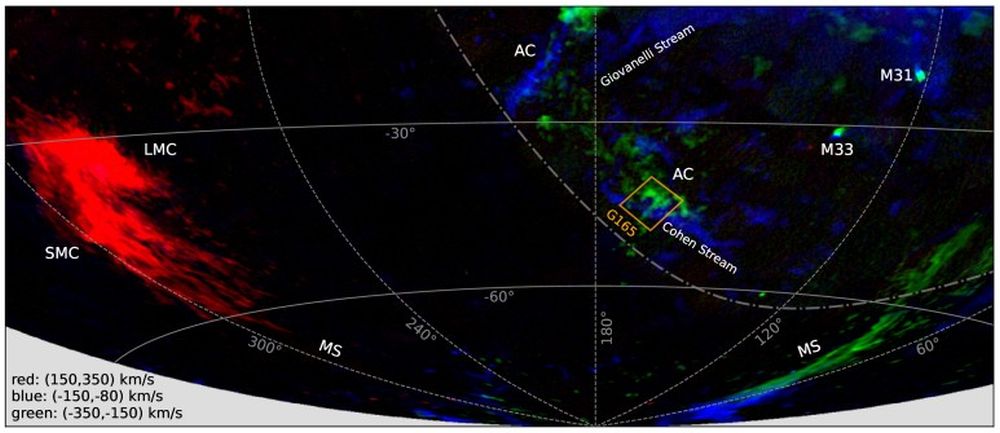 This image shows the G165 Very High Velocity Cloud in context. The Large and Small Magellanic Clouds are shown, as is the Magellanic Stream and other streams. Image Credit: Liu, X., Liu, T., Li, PS. et al. A network of velocity-coherent filaments formed by supersonic turbulence in a very-high-velocity H i cloud. Nat Astron (2025).
This image shows the G165 Very High Velocity Cloud in context. The Large and Small Magellanic Clouds are shown, as is the Magellanic Stream and other streams. Image Credit: Liu, X., Liu, T., Li, PS. et al. A network of velocity-coherent filaments formed by supersonic turbulence in a very-high-velocity H i cloud. Nat Astron (2025).
The ISM and its clouds go through different stages of density and temperature. The WNM is one of those stages and its temperature ranges from about 6000 to 10,000 Kelvin, too warm to form stars. At that temperature, the hydrogen is mostly in its neutral atomic form, denoted as H I. It's a transitional phase between cooler molecular clouds and hotter ionized hydrogen in galaxies. Molecular clouds contain CNM at about 50 to 100 K, and it's an important reservoir for star-forming material.
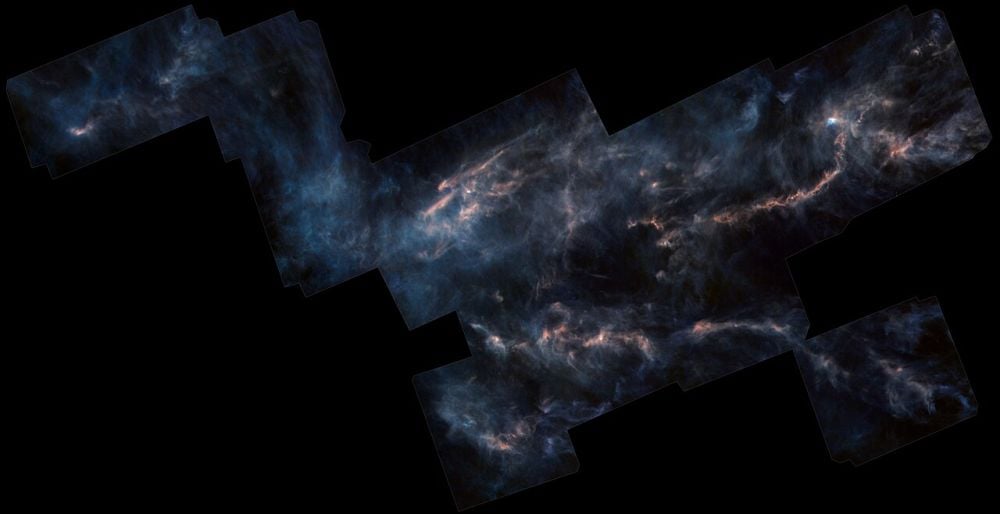 This is an image of the Taurus Molecular Cloud, an example of a giant molecular cloud of cold, dense hydrogen that's actively forming stars. It's actually a vast complex of clouds, and is the nearest large region of active star formation. Image Credit: Liu, X. et al. A network of velocity-coherent filaments formed by supersonic turbulence in a very-high-velocity H i cloud. Nat Astron (2025).
This is an image of the Taurus Molecular Cloud, an example of a giant molecular cloud of cold, dense hydrogen that's actively forming stars. It's actually a vast complex of clouds, and is the nearest large region of active star formation. Image Credit: Liu, X. et al. A network of velocity-coherent filaments formed by supersonic turbulence in a very-high-velocity H i cloud. Nat Astron (2025).
So the ISM contains different types of clouds moving at different velocities, and these clouds contain hydrogen at different temperatures. The central question regarding these clouds and their eventual ability to form stars is, how soon do these clouds start to show internal structure that can lead to future star formation?
Since the G165 cloud is primarily composed of the WNM and contains very little CNM, it could represent an earlier phase of cloud evolution than HVCs. When the researchers examined G165 with FAST, they discovered that the fast-moving cloud of warm gas has an unexpected internal structure. Previous research suggested these clouds were calm and featureless, but that's not the case.
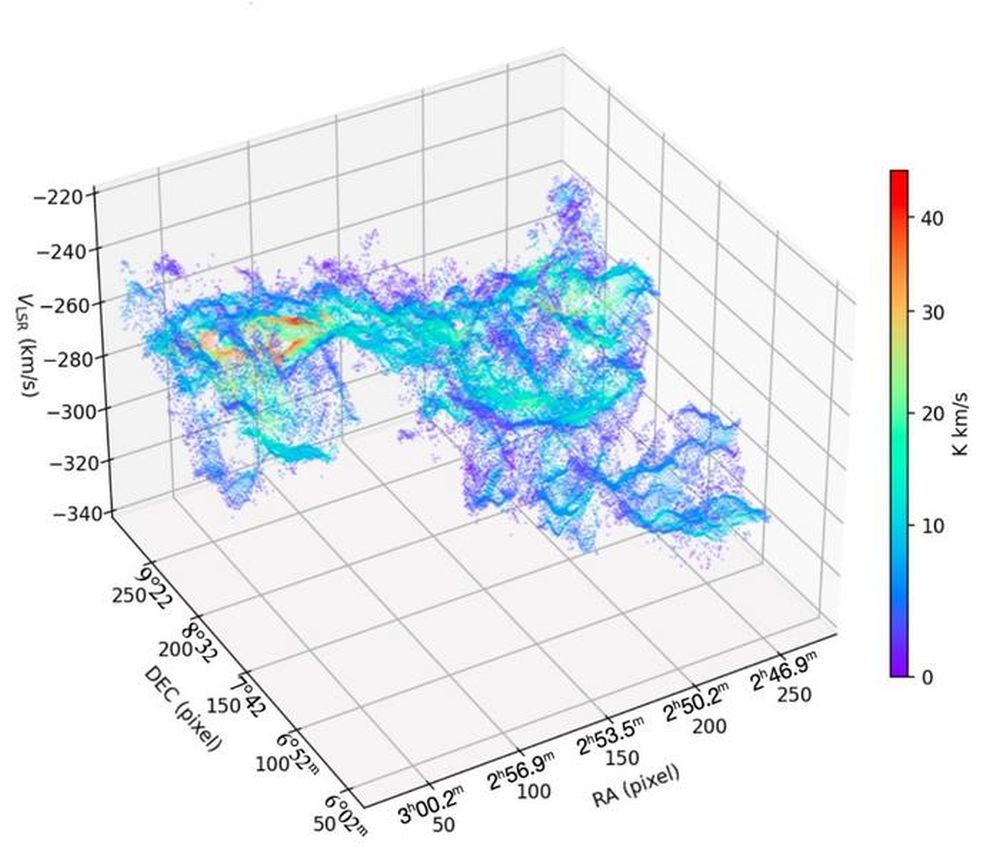 This image shows how neutral hydrogen is distributed in G165. "Each point represents the location (RA and DEC) and central velocity (VLSR) of the corresponding velocity component," the authors explain. Image Credit: Liu, X., Liu, T., Li, PS. et al. A network of velocity-coherent filaments formed by supersonic turbulence in a very-high-velocity H i cloud. Nat Astron (2025).
This image shows how neutral hydrogen is distributed in G165. "Each point represents the location (RA and DEC) and central velocity (VLSR) of the corresponding velocity component," the authors explain. Image Credit: Liu, X., Liu, T., Li, PS. et al. A network of velocity-coherent filaments formed by supersonic turbulence in a very-high-velocity H i cloud. Nat Astron (2025).
G165's WNM is supersonic and highly structured. It features a network of tangled filaments of gas. They form what a press release describes as "a web-like pattern across multiple layers of velocity." The filaments are twisted and they intersect with one another. They form a "three-dimensional lattice of gas with clear signs of turbulence, seen as velocity "wiggles" in the data," the press release explains.
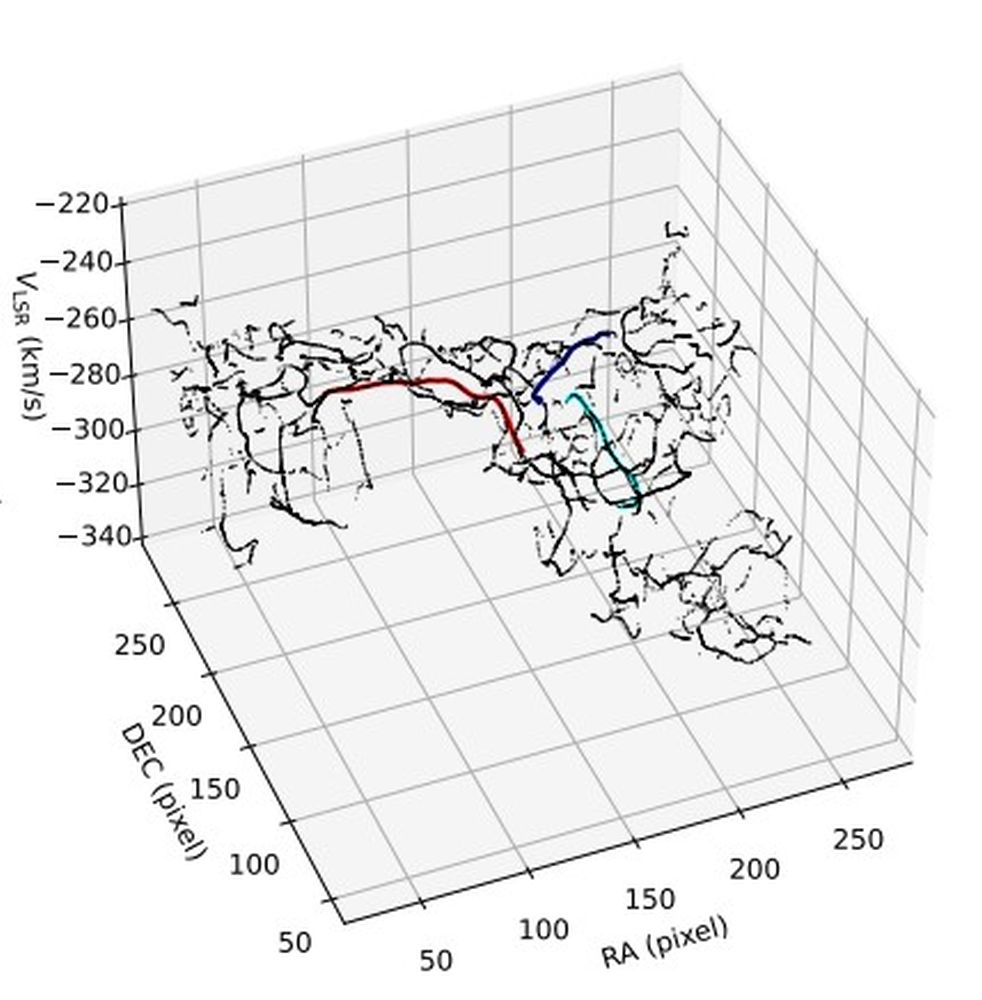 This figure shows the network of filaments that define G165's internal structure. Three typical filaments, B1, B2, and B3, are represented by different colors. Image Credit: Liu, X., Liu, T., Li, PS. et al. A network of velocity-coherent filaments formed by supersonic turbulence in a very-high-velocity H i cloud. Nat Astron (2025).
This figure shows the network of filaments that define G165's internal structure. Three typical filaments, B1, B2, and B3, are represented by different colors. Image Credit: Liu, X., Liu, T., Li, PS. et al. A network of velocity-coherent filaments formed by supersonic turbulence in a very-high-velocity H i cloud. Nat Astron (2025).
The researchers say that the filaments are created from shock compression "by supersonic magnetohydrodynamic (MHD) turbulence." To understand how this happens, they performed magnetohydrodynamic simulations. They ran the simulations at different turbulence levels: subsonic, transonic, and supersonic. They found that the supersonic simulations were able to produce slim filaments with asymmetric profiles that created a multi-layered pattern like the one observed in G165. They also found that the supersonic simulations reproduced the velocity gradient and velocity wiggles seen in G165's gas layers.
Together, their simulations support the idea that G165 is a dynamically correlated supersonic system. It's also trans-Alfvénic. Alfvénic speeds are when magnetic disturbances can propagate through plasma, so trans-Alfvénic means the flow of gas changes from being sub-Alfvénic to super-Alfvénic. So trans-Alfvénic regions generate shocks that can heat the plasma, affecting how the cloud's structure evolves, and, eventually, how they form stars. "The filament network in G165 VHVC is most likely formed due to supersonic MHD turbulence," the researchers explain.
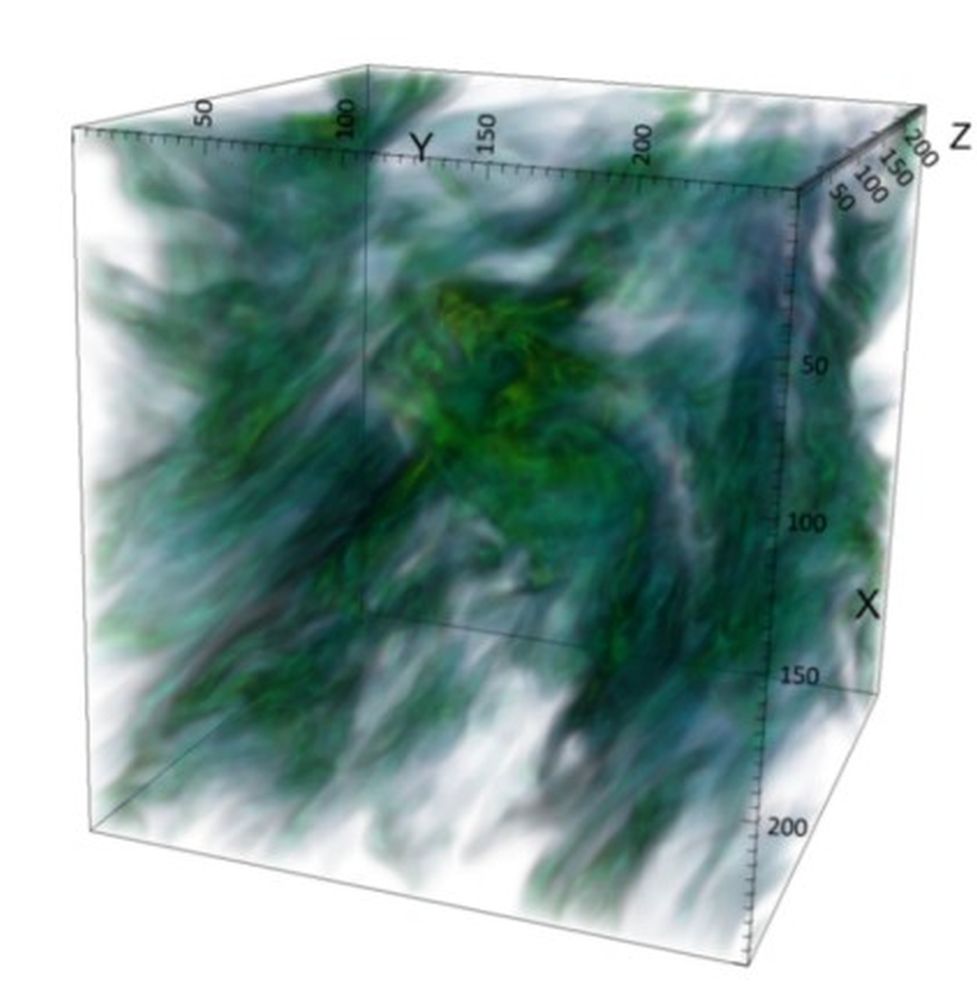 This 3D image shows the best-fit simulated model from the research. Image Credit: Liu, X., Liu, T., Li, PS. et al. A network of velocity-coherent filaments formed by supersonic turbulence in a very-high-velocity H i cloud. Nat Astron (2025).
This 3D image shows the best-fit simulated model from the research. Image Credit: Liu, X., Liu, T., Li, PS. et al. A network of velocity-coherent filaments formed by supersonic turbulence in a very-high-velocity H i cloud. Nat Astron (2025).
Overall, the research shows that just like molecular clouds, VHVCs can form hierarchical filamentary structures that include slim curves, hubs, and webs. Prior to this, astronomers thought these clouds were rather featureless. There's a growing body of evidence that these filaments are critical to star formation, and are sites of active accretion. They're likely directly connected to the formation of pre-stellar cores, according to this 2010 paper.
Finding these filaments forming in clouds unaffected by gravity, and due to magnetic disturbances, uncovers a new link between warm gas in very high velocity clouds, and the cold, denser hydrogen in star forming molecular clouds.
"This work suggests that hierarchical filaments can be established by shocks in a low-density WNM, where gravity is negligible, offering a viable pathway to structure formation in the earliest evolutionary phases of the interstellar medium (ISM)," the authors write.

